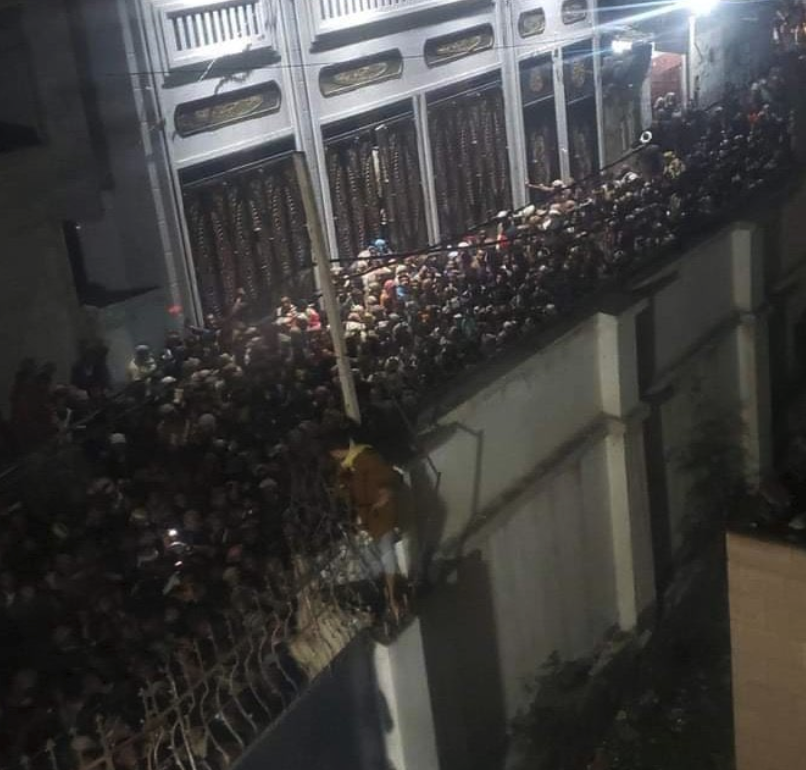AL-MUKALLA: At least 85 people were killed and hundreds injured in a crush at a Ramadan cash handout in Yemen early on Thursday.
Three people were detained over the stampede in Sanaa, the rebel-held capital, after large crowds gathered at a school to receive gifts of 5,000 rials ($8) for the end of Ramadan.
Dozens of Yemeni activists, lawyers, and journalists demanded an independent and thorough investigation into the deadly incident as world envoys to the country, aid organizations, and rights groups expressed shock and offered condolences.
Yemenis penned an online petition demanding that the Iran-backed Houthis include local rights groups and lawyers in an independent investigation, pay public employees in areas they control, and cease harassment of local charities and merchants who donate to the poor.

Social media image purportedly of the stampede site in Sanaa.
“We demand the formation of a fair and impartial investigation committee, with community participation, comprised of representatives from the Bar Association and human rights organizations, to investigate this incident and enforce the law,” the Yemeni activists said in their letter.
They added: “Likewise, we condemn vehemently preventing merchants from distributing alms to the impoverished and helpless.”
The Houthis said that their leader, Mahdi Al-Mashat, ordered the formation of an investigation committee, while other Houthi officials blamed the crush on their opponents for imposing a “blockade” as well as traders’ refusal to cooperate with the militia’s security authorities.
Yemenis, however, accused the Houthis of causing the tragedy by failing to pay thousands of public employees, squandering state revenues, and even harassing local merchants and charitable organizations that assist the poor.
“People died because you didn’t pay their salaries,” said Khaled Al-Ruwaishan, a former Yemeni culture minister and an outspoken Sanaa-based writer.
Yemen Minister of Information Muammar Al-Eryani called the stampede a “massacre” and accused the Houthi of fueling poverty in Yemen by looting state revenues, refusing to pay public sector employees, harassing private sector representatives and impeding the distribution of humanitarian aid.
“Those who bear responsibility for the incident are the ones who plundered food from the mouths of the hungry, imposed restrictions on international relief organizations, prevented merchants and philanthropists from distributing alms to the needy, plundered zakat and endowment funds, and imposed illegal fees and levies,” the minister said on Twitter.
Hans Grundberg, UN Yemen envoy, tweeted: “I and everyone in my office are pained and deeply saddened by the tragic stampede in Sanaa on the eve of Eid. My heartfelt condolences go out to all Yemenis grieving today and I wish the injured a speedy recovery.”
Richard Oppenheim, UK ambassador to Yemen, said: “This is a terrible tragedy at a time when we are expecting Eid. We are working hard with our partners in Yemen and around the world to support Yemen to achieve peace.”
Steven Fagin, US ambassador to Yemen, said: “We extend our condolences to the families of those who lost their lives in today’s tragic incident in Sanaa and we wish the injured a speedy recovery.”



























